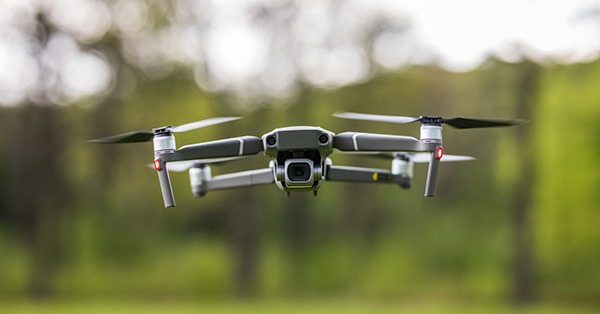Introduction
Drones, once relegated to the realm of fantasy, have now become a game-changing phenomenon, fundamentally altering various industries and charting the course of transportation, delivery, and surveillance. No longer confined to the pages of science fiction, these airborne machines are set to tackle ever more complex missions driven by Generative AI (GenAI) and sophisticated software.
Integration of Gen AI
Picture a drone endowed with the ability to learn, adapt, and autonomously make decisions, akin to human-like intelligence. Generative Artificial Intelligence (GenAI) empowers drones to perceive their environment, analyze real-time data, and navigate through dynamic situations independently, reducing the need for human intervention.
The incorporation of GenAI into drones signifies a revolutionary change in their abilities and facilitates the following scenarios:
- Inspections and Maintenance Automation: AI-equipped drones can autonomously inspect infrastructure or equipment, conducting minor maintenance tasks with precision.
- Autonomous Navigation: Drones outfitted with GenAI can navigate through complex environments, adeptly avoiding obstacles and adapting to diverse conditions.
- Surveillance: They possess the intelligence to recognize and monitor objects of interest, bolstering security and surveillance efforts.
- Precision Agriculture: Drones equipped with advanced sensors can monitor crop health, identify pests and diseases, and optimize irrigation, promoting sustainable and efficient agricultural practices.
- Defense / Military: With advancements in military-grade drone technology, drones play a significant role in surveillance and combat operations, offering strategic advantages to defense and military forces.
Innovative Software Solutions
The software powering unmanned drones undergoes continuous evolution as technological advancements progress. The latest software innovations, outlined below, notably enhance the functionality, safety, and user interaction of drones.
- Dynamic Mapping: Empowering drones with sophisticated mapping software generates intricate, real-time maps suitable for various applications such as surveying, disaster response, and urban planning.
- Cooperative Swarming: Drones demonstrate the ability to collaborate in swarms, exchanging information and coordinating tasks to boost efficiency in fields like agriculture and infrastructure inspection.
- Machine Learning Integration: Machine learning algorithms seamlessly integrate into the drone software, enabling them to identify patterns, make predictions, and steadily enhance their operational capabilities.
Practical Implementations of Drones
The convergence of intelligent software and drones opens numerous practical applications that redefine industries and elevate everyday experiences!
- Surveillance: Drones outfitted with GenAI technology can monitor ecosystems, detect fluctuations in biodiversity, and contribute to conservation endeavors.
- Rescue Operations: Intelligent drones can autonomously scan through large areas in search of missing individuals, pinpoint their whereabouts, and even deliver essential supplies.
- Urban Planning: From managing traffic flow to inspecting infrastructure, intelligent drones assist in urban planning and development.
- Logistics Management: By intelligently planning routes, drones can navigate complex urban landscapes, circumvent traffic congestion, and directly deliver packages to recipients’ destinations. Drones present swifter and more environmentally friendly alternatives to conventional ground-based delivery methods, reaching remote areas and improving access to vital goods and services.
- Disaster Relief: During natural calamities, drones play a vital role in rescue missions, damage assessment, and resource allocation optimization by offering crucial real-time insights.
Conclusion
In the dynamic realm of drone technology, the integration of GenAI and state-of-the-art software is catapulting these unmanned wonders into unprecedented realms. In essence, drones equipped with intelligent software provide a faster, more convenient, cost-effective, and expansive approach to tackling real-world challenges.
An article from MulticoreWare Inc.


























































